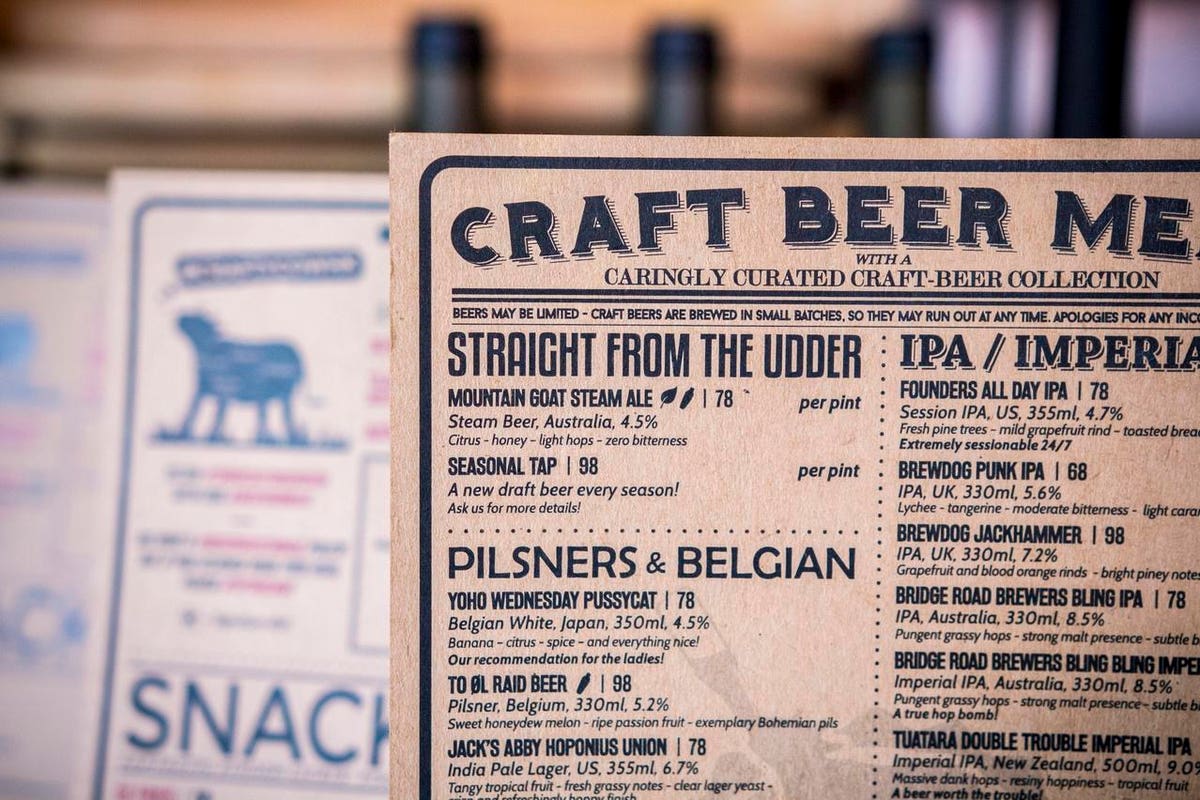The brewery taproom experience is changing.
In response to increasing competition among the approximately 10,000 breweries in America in the face of stagnating growth, breweries are increasing efforts to sell more beer in their own taprooms, where profit margins are best for the brewery.
“You have to provide ‘wow’ experiences,” says Andrew Coplon, founder of Secret Hopper, a mystery shopping company for brewery taprooms. “When there are 10 breweries within 10 miles, as a consumer, I’m going where I know I’m going to get a great overall experience.”
It used to be that brewery taprooms were sparsely decorated — sometimes even sparsely furnished — rooms with concrete floors and brewing equipment scattered about. They often looked like afterthoughts because they were. Their purpose was to provide a place to taste the brewery’s beer, and not much more. In fact, in many states, breweries selling beer from their own premises was illegal, so breweries put minimal thought into the visitor experience.
But as craft beer drinkers have more options and become more discerning, breweries are responding with better experiences. “From conversations I’m having with brewery owners, they want their taprooms to be destinations,” says Coplon. “They’re having events and trying to attract new audiences and have those customers come back.”
Michael Varda, founder of Craft Beer Advisory Services agrees. “Every piece of research that I’ve done would support the hypothesis that brewery taprooms are trying harder to look more like pubs and restaurants,” he says. Varda’s company annually gathers thousands of online reviews for brewery taprooms and analyzes the factors that influence positive and negative customer experiences.
For 2022, Craft Beer Advisory Services found that lack of drink variety (that is, non-beer options) and food have risen to the top of the list of factors prompting consumers’ negative reviews. For prompting positive reviews, beer and location have decreased in importance while, service, entertainment and being family-friendly have increased. When reviews discuss entertainment, brewery tours had always top of the list, but in 2022, that was supplanted by mentions of live music.
All of this points to a change in consumer expectation. Gone are the days when the stereotypical craft beer drinker spent a bit of time in a brewery taproom for a flight and a pint. The need for taprooms to draw more diverse audiences and have those customers stay longer and spend more money, has never been greater. “High engagement will cause customers to spend more money,” says Coplon.
As taprooms develop, consumers can expect engaging staff to help with beer selection, table service rather than counter service and a broader array of beer and non-beer drinks to satisfy more palates. Food options beyond simple snacks and family-friendly entertainment such as board games will become commonplace.
The point is to de-emphasize beer and make the brewery taproom welcoming to more patrons. Says Varda, “As craft beer tries to overcome the bearded white guy stereotype, they need to attract a more diverse audience.”
Read the full article here





